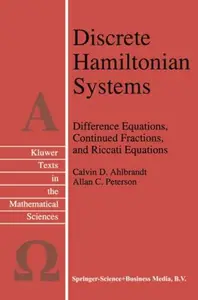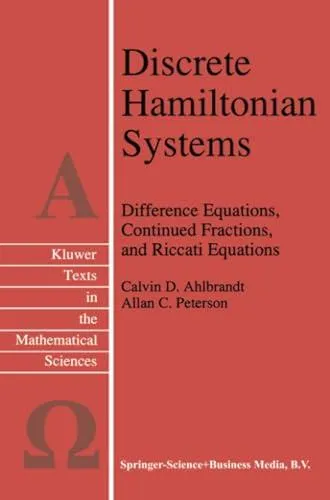Discrete Hamiltonian Systems: Difference Equations, Continued Fractions, and Riccati Equations By Calvin D. Ahlbrandt, Allan C. Peterson (auth.)
1996 | 376 Pages | ISBN: 1441947639 | PDF | 8 MB
1996 | 376 Pages | ISBN: 1441947639 | PDF | 8 MB
This book should be accessible to students who have had a first course in matrix theory. The existence and uniqueness theorem of Chapter 4 requires the implicit function theorem, but we give a self-contained constructive proof ofthat theorem. The reader willing to accept the implicit function theorem can read the book without an advanced calculus background. Chapter 8 uses the Moore-Penrose pseudo-inverse, but is accessible to students who have facility with matrices. Exercises are placed at those points in the text where they are relevant. For U. S. universities, we intend for the book to be used at the senior undergraduate level or beginning graduate level. Chapter 2, which is on continued fractions, is not essential to the material of the remaining chapters, but is intimately related to the remaining material. Continued fractions provide closed form representations of the extreme solutions of some discrete matrix Riccati equations. Continued fractions solution methods for Riccati difference equations provide an approach analogous to series solution methods for linear differential equations. The book develops several topics which have not been available at this level. In particular, the material of the chapters on continued fractions (Chapter 2), symplectic systems (Chapter 3), and discrete variational theory (Chapter 4) summarize recent literature. Similarly, the material on transforming Riccati equations presented in Chapter 3 gives a self-contained unification of various forms of Riccati equations. Motivation for our approach to difference equations came from the work of Harris, Vaughan, Hartman, Reid, Patula, Hooker, Erbe & Van, and Bohner.
By Buying/Renewing Premium From My Blog Links, You Invest in Our Community's Future



